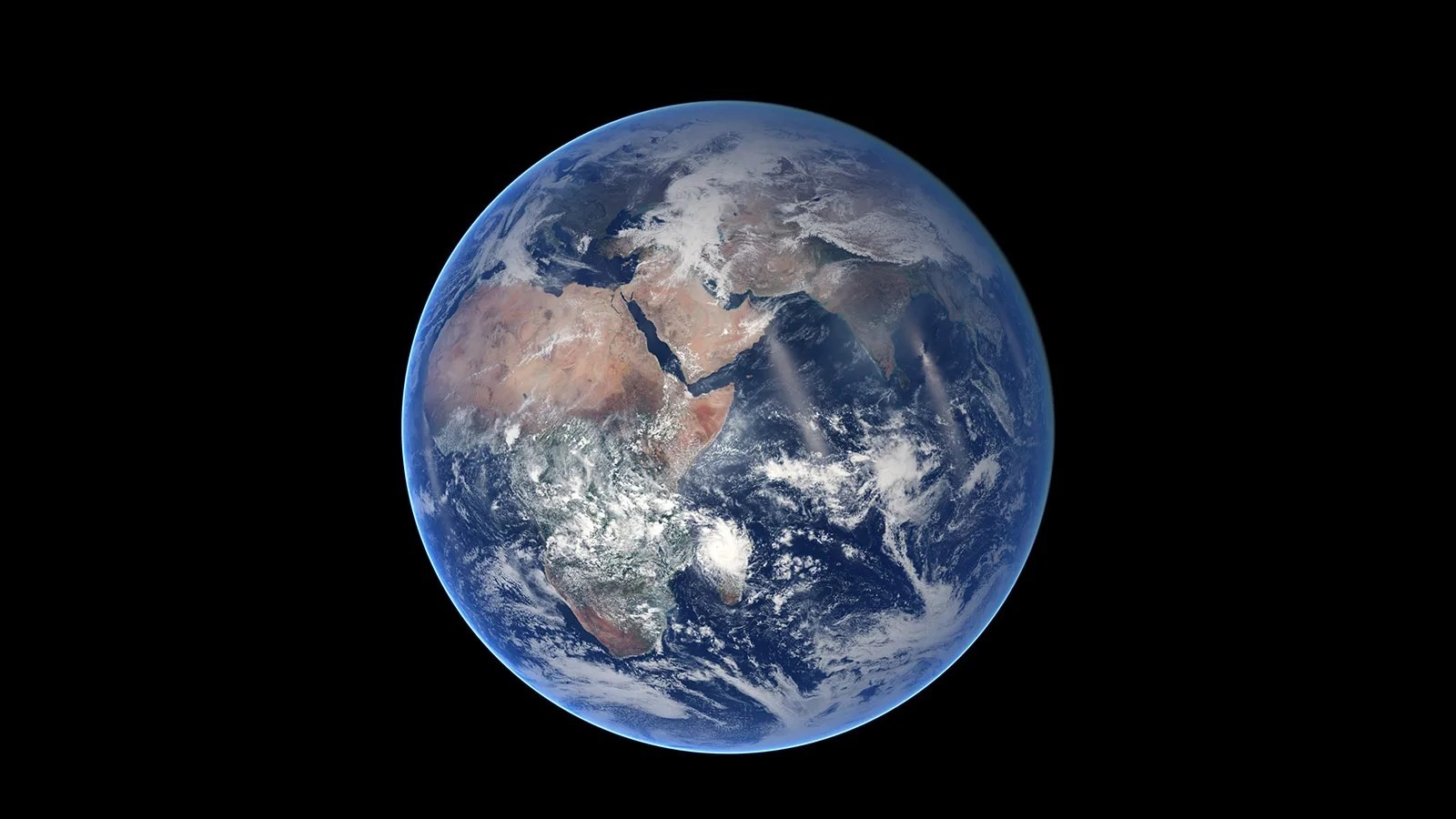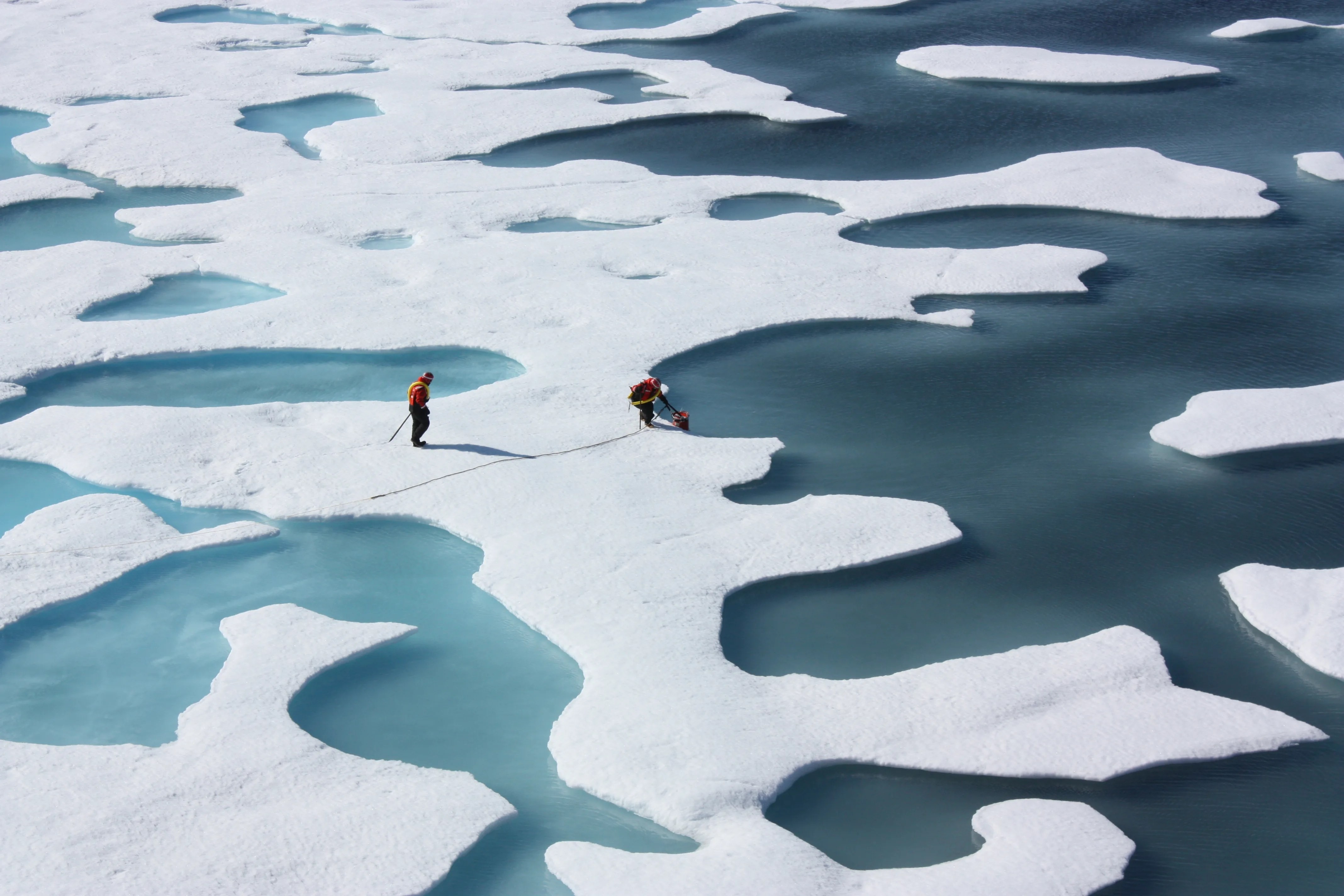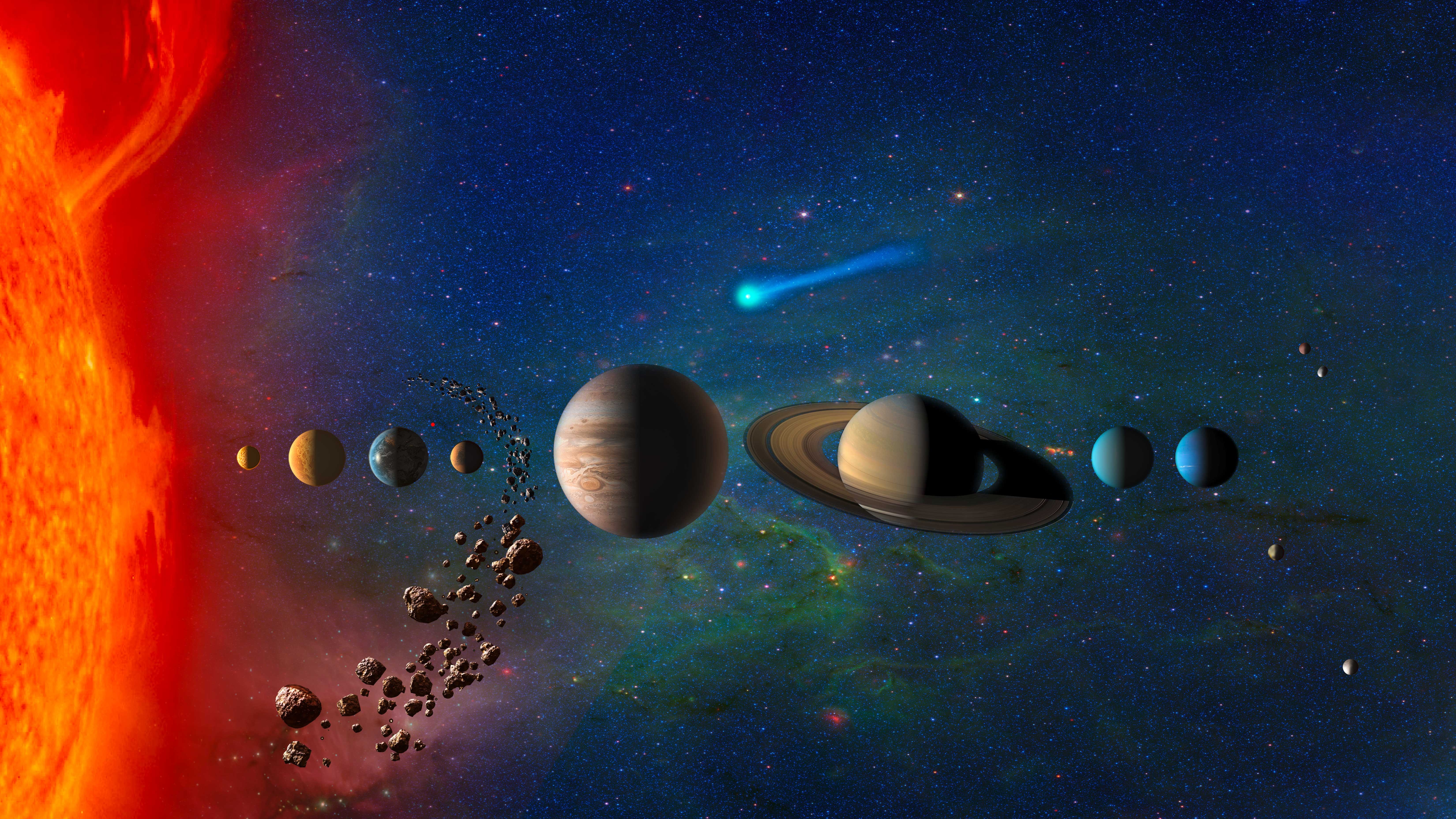Earth, our home, is a complex and dynamic planet. At WHAT.EDU.VN, we offer explanations about its composition, structure, and unique features. This comprehensive guide aims to uncover the secrets of our planet.
1. Unveiling Earth: An Introduction to Our Home
Earth, the third planet from the Sun, and the fifth largest in our solar system, holds a unique distinction. It’s the only known place in the universe teeming with life. But what exactly constitutes Earth? What makes it so special? Let’s embark on a journey to explore the physical makeup of Earth, diving deep into its layers, atmosphere, and other defining characteristics. Understand Earth’s structure, environmental factors, and geological composition.
2. The Quick Facts: Earth at a Glance
Before we delve deeper, let’s take a moment to appreciate some quick facts about our amazing planet:
| Fact | Value |
|---|---|
| Length of Day | 23.9 hours |
| Length of Year | 365.25 days |
| Distance from Sun | 93.327 million miles / 150.196 million kilometers |
| One Way Light Time to Sun | 8.35 minutes |




These basic facts give us a foundational understanding of Earth’s place in the solar system and its fundamental properties.
3. Earth’s Name: A Historical Perspective
Unlike other planets named after Greek or Roman deities, Earth’s name has Germanic origins, simply meaning “the ground”. This humble name belies the complexity and grandeur of our planet. Each language around the globe carries its own unique name for Earth, reflecting the diverse cultures that call it home.
4. The Potential for Life: What Makes Earth Habitable?
Earth’s unique combination of temperature, chemicals, and abundant water creates a haven for life. Liquid water, covering most of the planet, has allowed life to flourish for billions of years. However, ongoing climate change is altering these features, presenting new challenges.
5. Size and Distance: Putting Earth in Perspective
Earth’s equatorial diameter measures 7,926 miles (12,760 kilometers), making it the largest of the terrestrial planets. At an average distance of 93 million miles (150 million kilometers) from the Sun, Earth is precisely one astronomical unit (AU) away. Sunlight takes approximately eight minutes to reach our planet.
6. Orbit and Rotation: The Dance of Seasons
Earth completes one rotation every 23.9 hours and orbits the Sun in 365.25 days. The extra quarter day leads to the addition of a leap day every four years, keeping our calendar synchronized with Earth’s orbit. Earth’s axis is tilted at 23.4 degrees, causing our seasons.
7. Earth’s Moon: A Cosmic Companion
Our Moon is the brightest object in our night sky. It stabilizes Earth’s wobble, which has contributed to climate stability over millennia. Some asteroids temporarily orbit Earth before returning to their path around the Sun. The Moon likely formed from debris after a collision between Earth and a Mars-sized object billions of years ago.
8. Rings: Does Earth Have Any?
Unlike other planets in our solar system, Earth does not have a ring system.
9. Earth’s Formation: From Dust to Planet
About 4.5 billion years ago, Earth formed from swirling gas and dust drawn together by gravity. Like other terrestrial planets, Earth has a central core, a rocky mantle, and a solid crust.
10. The Structure of Earth: Layers Upon Layers
Earth is composed of four main layers:
10.1. The Inner Core:
A solid sphere of iron and nickel, about 759 miles (1,221 kilometers) in radius, with temperatures reaching 9,800 degrees Fahrenheit (5,400 degrees Celsius).
10.2. The Outer Core:
A 1,400-mile (2,300 kilometers) thick layer of iron and nickel fluids surrounding the inner core.
10.3. The Mantle:
The thickest layer, about 1,800 miles (2,900 kilometers) thick, is a hot, viscous mixture of molten rock.
10.4. The Crust:
The outermost layer extends about 19 miles (30 kilometers) deep on land and 3 miles (5 kilometers) from the seafloor.
11. The Surface of Earth: A Dynamic Landscape
Like other terrestrial planets, Earth has a varied surface with volcanoes, mountains, and valleys. Earth’s lithosphere is divided into tectonic plates that are constantly moving, causing earthquakes and mountain formation. The global ocean covers approximately 70% of Earth’s surface.
12. Earth’s Atmosphere: A Protective Shield
Earth’s atmosphere consists of 78% nitrogen, 21% oxygen, and 1% other gases. This protective layer affects the climate, shields us from harmful radiation, and burns up most meteoroids before they reach the surface.
13. The Magnetosphere: Earth’s Magnetic Field
Earth’s rapid rotation and molten core create a magnetic field that protects the planet from the solar wind. Charged particles trapped in the magnetic field collide with air molecules, causing aurorae (northern and southern lights). The magnetic polarity of Earth can change over time, reversing the direction of the magnetic field.
14. Eight Key Facts About Earth
Here are eight need-to-know things about our home planet:
- Size Comparison: If the Sun were the size of a door, Earth would be about the size of a nickel.
- Surface Composition: Earth has a dynamic surface composed of mountains, canyons, plains, and water.
- Atmospheric Balance: Earth’s atmosphere is perfectly balanced with 78% nitrogen, 21% oxygen, and 1% other gases.
- Lunar Companion: Earth has one moon.
- Absence of Rings: Earth has no rings.
- Spacecraft Observation: Many spacecraft study Earth as a whole system.
- Habitable Environment: Earth is the perfect place for life as we know it.
- Meteoroid Protection: Earth’s atmosphere protects us from incoming meteoroids.
15. Earth for Kids: Making it Easy to Understand
Earth is a rocky planet with one moon. It is special because it is an ocean planet with mountains, valleys, and plains.
16. Delving Deeper: Exploring Key Aspects of Earth
Let’s dive into some important aspects of Earth’s composition in more detail:
16.1. Chemical Composition
Earth’s chemical composition is complex. The major components include:
- Iron (Fe): Approximately 32.1% of Earth’s mass.
- Oxygen (O): Around 30.1%.
- Silicon (Si): About 15.1%.
- Magnesium (Mg): Roughly 13.9%.
- Sulfur (S): Around 2.9%.
- Nickel (Ni): Approximately 1.8%.
- Calcium (Ca): About 1.5%.
- Aluminum (Al): Around 1.4%.
Trace amounts of other elements also exist, contributing to the complexity of Earth’s composition.
16.2. The Geosphere
The geosphere includes all the solid parts of Earth, from the core to the surface. It consists of the crust, mantle, and core. Tectonic plates move slowly over the asthenosphere, the semi-molten part of the mantle, causing earthquakes, volcanic eruptions, and mountain building.
16.3. The Hydrosphere
The hydrosphere includes all the water on Earth. This includes oceans, seas, lakes, rivers, groundwater, ice caps, glaciers, and water vapor in the atmosphere. Oceans cover about 71% of Earth’s surface and regulate temperature and climate.
16.4. The Atmosphere in Detail
The atmosphere consists of several layers:
- Troposphere: The lowest layer, where weather occurs.
- Stratosphere: Contains the ozone layer, which absorbs harmful UV radiation.
- Mesosphere: Where most meteoroids burn up.
- Thermosphere: Where temperatures increase with altitude.
- Exosphere: The outermost layer, where the atmosphere merges with space.
16.5. The Biosphere
The biosphere includes all living organisms on Earth, interacting with the geosphere, hydrosphere, and atmosphere. It is characterized by a cycling of nutrients and energy, supporting a vast array of ecosystems.
16.6. Minerals and Rocks
Earth’s crust is composed of a variety of minerals and rocks. Minerals are naturally occurring, inorganic solids with a specific chemical composition and crystal structure. Rocks are aggregates of one or more minerals. The three main types of rocks are:
- Igneous Rocks: Formed from cooled magma or lava.
- Sedimentary Rocks: Formed from sediment deposited over time.
- Metamorphic Rocks: Formed when existing rocks are transformed by heat, pressure, or chemical reactions.
17. Earth’s Shape: Not a Perfect Sphere
Earth is often described as a sphere, but it is more accurately described as an oblate spheroid. It bulges at the equator due to the centrifugal force of its rotation. The equatorial diameter is about 43 kilometers (27 miles) larger than the polar diameter.
18. Gravitational Field
Earth’s gravitational field varies slightly over the surface due to differences in mass distribution. The strength of gravity depends on mass and distance. The average gravitational acceleration at Earth’s surface is about 9.8 m/s².
19. Earth’s Magnetic Field in Depth
The magnetic field is generated by the movement of liquid iron in the outer core, a process known as the geodynamo. It protects Earth from harmful solar wind and cosmic radiation. The magnetic poles are not aligned with the geographic poles and wander over time.
20. Geological Time Scale
The geological time scale divides Earth’s history into eons, eras, periods, and epochs. It is based on the study of rock layers (stratigraphy) and fossils. The major divisions mark significant changes in Earth’s geology, climate, and life forms.
21. Natural Resources
Earth provides a wealth of natural resources, including:
- Fossil Fuels: Coal, oil, and natural gas, formed from the remains of ancient organisms.
- Minerals: Ores of metals such as iron, aluminum, copper, and gold.
- Water: Essential for life and many industrial processes.
- Soil: Necessary for agriculture and forestry.
22. Environmental Issues
Earth faces many environmental challenges, including:
- Climate Change: Caused by the buildup of greenhouse gases in the atmosphere.
- Pollution: Contamination of air, water, and soil by human activities.
- Deforestation: Clearing of forests for agriculture, logging, and development.
- Loss of Biodiversity: Extinction of plant and animal species.
23. Exploring Earth Science
NASA’s unique vantage point helps us inform solutions to enhance decision-making, improve livelihoods, and protect our planet.
24. Climate Change on Earth
NASA is a global leader in studying Earth’s changing climate.
25. Other Planets in Our Solar System
Our Solar System contains planets: Mercury, Venus, Mars, Jupiter, Saturn, Uranus and Neptune.
26. The Future of Earth
The future of Earth depends on our actions. We must take steps to mitigate climate change, reduce pollution, and conserve natural resources. Sustainable practices are essential for ensuring a healthy planet for future generations.
27. The Composition of Earth: Frequently Asked Questions (FAQ)
Here are some frequently asked questions about the composition of Earth:
| Question | Answer |
|---|---|
| What is the most abundant element in Earth’s crust? | Oxygen is the most abundant element, making up about 46.6% of the crust by weight. |
| What is the Earth’s core made of? | The Earth’s core is primarily made of iron and nickel. The inner core is solid, while the outer core is liquid. |
| How thick is the Earth’s crust? | The Earth’s crust varies in thickness. It is about 5-10 km thick under the oceans (oceanic crust) and about 30-50 km thick under the continents (continental crust). |
| What is the composition of the Earth’s atmosphere? | The Earth’s atmosphere is composed of about 78% nitrogen, 21% oxygen, and small amounts of other gases like argon, carbon dioxide, and neon. |
| What are tectonic plates? | Tectonic plates are large pieces of Earth’s lithosphere that move and interact with each other. Their movement causes earthquakes, volcanic activity, and mountain formation. |
| What is the role of the Earth’s magnetic field? | The Earth’s magnetic field protects the planet from harmful solar wind and cosmic radiation. It is generated by the movement of liquid iron in the Earth’s outer core. |
| What is the difference between a mineral and a rock? | A mineral is a naturally occurring, inorganic solid with a specific chemical composition and crystal structure. A rock is an aggregate of one or more minerals. |
| How much of the Earth’s surface is covered by water? | Approximately 71% of the Earth’s surface is covered by water, mostly in the form of oceans. |
| What are the main layers of the Earth’s atmosphere? | The main layers of the Earth’s atmosphere are the troposphere, stratosphere, mesosphere, thermosphere, and exosphere. |
| How does the Earth’s rotation affect its shape? | The Earth’s rotation causes it to bulge at the equator, resulting in an oblate spheroid shape. The equatorial diameter is larger than the polar diameter. |
28. Further Reading
To expand your knowledge about Earth’s composition, consider exploring these resources:
- NASA Earth Observatory
- United States Geological Survey (USGS)
- National Oceanic and Atmospheric Administration (NOAA)
- Educational websites and documentaries
29. Uncover the Secrets of Our Planet with WHAT.EDU.VN
Understanding Earth’s composition is crucial for appreciating its beauty and protecting its future. At WHAT.EDU.VN, we strive to provide accessible and comprehensive information about our planet. Whether you are a student, a researcher, or simply curious, we hope this guide has been informative and engaging.
30. Got Questions? Get Answers at WHAT.EDU.VN
Do you have burning questions about Earth, science, or anything else? Don’t struggle to find answers alone. At WHAT.EDU.VN, we provide a free platform for you to ask any question and receive prompt, accurate responses from knowledgeable experts.
We understand the challenges of finding reliable information quickly and without cost. That’s why we’ve created a user-friendly space where curiosity is encouraged, and answers are readily available.
31. Why Choose WHAT.EDU.VN for Your Questions?
- Free Access: Ask as many questions as you like, completely free of charge.
- Fast Responses: Get timely answers to your queries.
- Expert Knowledge: Our community includes professionals and enthusiasts in various fields.
- Easy to Use: Our platform is designed for simplicity and ease of navigation.
- Comprehensive Information: Access a wealth of knowledge on diverse topics.
32. Ready to Ask? Here’s How
- Visit WHAT.EDU.VN
- Create a free account or log in.
- Type your question in the search bar.
- Submit your question and await a response from our community.
33. Connect With Us
Have more questions or need further assistance? Reach out to us:
- Address: 888 Question City Plaza, Seattle, WA 98101, United States
- WhatsApp: +1 (206) 555-7890
- Website: WHAT.EDU.VN
34. A Call to Action: Ask Your Questions Now
Don’t let your curiosity wait. Visit WHAT.EDU.VN today and ask your questions. Our team of experts is ready to provide the answers you seek, completely free of charge. Unlock a world of knowledge and connect with a community of learners. Your journey to understanding starts now. Let what.edu.vn be your trusted resource for all your questions.
